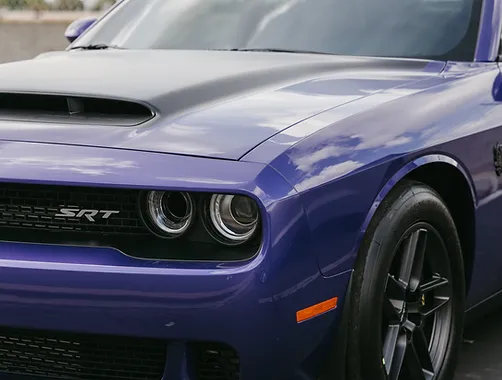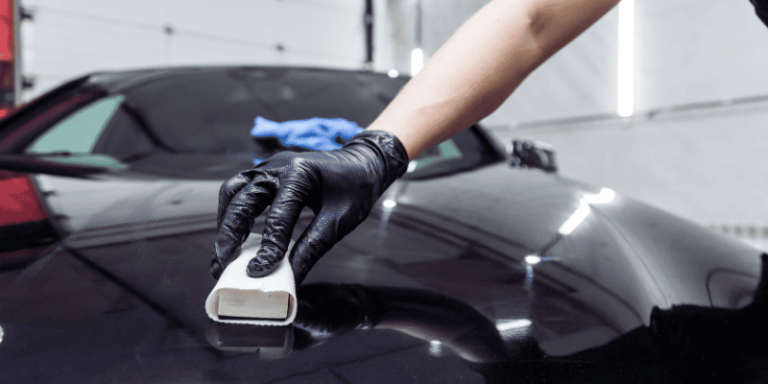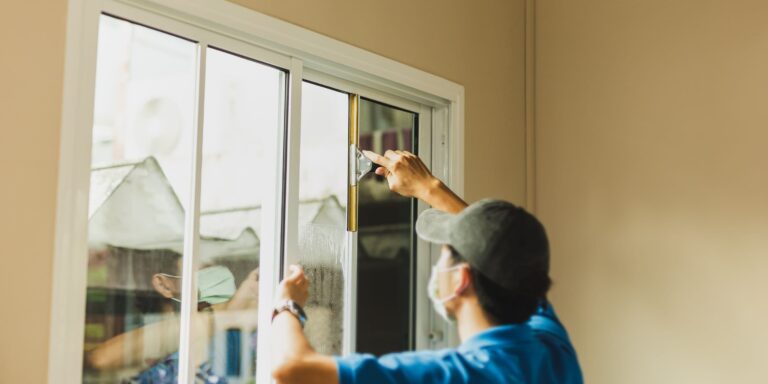Car window tinting does more than just enhance your vehicle’s appearance, it helps block UV rays, reduce glare, and keep the interior cooler. But many car owners ask one common question: how long should window tint last? The truth is, the lifespan of window tint depends on several factors such as the type of film, installation quality, and exposure to sunlight. Some tints can last 5 years, while others can remain effective for more than 20 years.
Over time, even the best tints begin to fade, peel, or lose their protective ability, which affects both comfort and safety. Knowing what determines your tint’s durability can help you make smarter choices, protect your investment, and avoid unnecessary replacements. In this article, we’ll explore how long different window tints typically last, what affects their lifespan, signs of ageing, and the best maintenance tips to make them last longer.
Understanding “Lifespan” for Window Tint: What It Really Means
When people talk about the lifespan of window tint, they often refer to two things, how long it looks good and how long it performs effectively. A tint may still be on your window after ten years, but that doesn’t mean it’s doing its job well.
- Functional lifespan refers to how long it can block heat, UV rays, and glare.
- Physical lifespan is about how long the film remains intact without peeling or bubbling.
Some manufacturers offer warranties that reflect this performance time, but real-world conditions often tell a different story. Factors like sun exposure, maintenance, and installation quality all influence how long your tint will last. In general, dyed tints fade faster, while ceramic tints can last for decades when properly maintained.
Typical Lifespan Range for Window Tint
On average, window tints last between 5 to 10 years, depending on quality and care. However, modern films with advanced technology can stretch that lifespan to 15 or even 20 years. For instance, a basic dyed film might only survive 3 to 5 years before fading, while premium ceramic films can maintain their appearance and protection for over a decade. It’s also important to understand that warranties may cover defects like bubbling or peeling but not natural ageing or neglect. The table below gives a quick look at how long different types of window tints typically last.
| Type of Window Tint | Expected Lifespan | Durability Rating | Notes |
| Dyed Film | 3–5 years | Low | Fades quickly, low UV resistance |
| Metalized Film | 5–10 years | Moderate | Reflective but may affect signals |
| Carbon Film | 7–10 years | High | Strong heat and UV rejection |
| Ceramic Film | 10–20+ years | Very High | Longest-lasting and best clarity |
| Hybrid Film | 6–12 years | High | Balanced performance and cost |
This variation shows why understanding film type is so important before tinting your vehicle.
Types of Window Tint and Their Durability
The material used in your window tint is one of the strongest indicators of how long it will last.
Dyed Tint is the most affordable option, but it tends to fade quickly because it relies on dye layers that break down under UV exposure. These films typically last around 3 to 5 years and are best for temporary use or tight budgets.
Metalized Tint contains metallic particles that reflect sunlight, improving heat resistance and durability. With proper care, they can last up to 10 years, though some users dislike the reflective finish or GPS interference they may cause.
Carbon Tint films use carbon particles that block infrared light and don’t fade easily. They can last between 7 to 10 years and offer a deep matte finish that many car owners prefer.
Ceramic Tint is considered the top-tier option, using non-metallic, non-dye ceramic particles. These films resist fading, block more than 99% of UV rays, and last 10 to 20 years or longer. They are pricier but provide unmatched clarity and performance.
Hybrid Tints combine two or more technologies, like dyed and metalized layers, to balance cost, performance, and lifespan, typically lasting 6 to 12 years.
Key Factors That Influence How Long Tint Lasts
The lifespan of window tint doesn’t depend on the material alone, environmental and usage factors play huge roles too.
- Quality of Film: Cheap films often lack strong adhesives or UV blockers, leading to early peeling or discoloration.
- Installation Quality: Professional installation ensures proper adhesion, clean glass preparation, and smooth finish. Poor DIY jobs often result in bubbling within months.
- Sun Exposure: Vehicles parked in direct sunlight every day experience faster fading and deterioration.
- Climate Conditions: Extreme temperatures, especially in hot or humid areas, can weaken tint adhesives.
- Maintenance Habits: Using harsh cleaning chemicals, like ammonia-based glass cleaners, can damage the film. Gentle cleaning with soft cloths and non-abrasive solutions helps preserve the tint.
- Parking Habits: Parking under shade or in a garage can extend tint life by several years.
A car parked daily in the sun with low-quality film might see tint failure within three years, while a garage-kept car with ceramic tint can look flawless even after 15 years.
Signs It’s Time to Replace Your Window Tint
Even the best tint won’t last forever. Over time, exposure to UV rays, temperature shifts, and cleaning can cause damage that affects both appearance and performance.
Here are the most common signs your tint is nearing the end of its lifespan:
- Bubbling and Peeling: Often caused by heat or poor adhesion. Once bubbles form, they’re nearly impossible to fix.
- Color Fading or Turning Purple: Dyed tints are especially prone to discoloration from UV exposure.
- Scratches or Cracks: Frequent rolling up/down of windows can wear the film.
- Loss of Heat Rejection: If you notice the cabin heating up faster, your tint may have lost its protective layer.
- Hazy or Cloudy Appearance: Indicates breakdown of adhesive or oxidation of tint layers.
These signs mean the film is no longer performing as intended and should be replaced soon to maintain comfort, privacy, and UV protection.
How to Maximize the Lifespan of Your Window Tint
A high-quality tint can only reach its full lifespan if it’s properly cared for. Even the most durable ceramic films can deteriorate early without the right maintenance. To extend the life of your tint, it’s important to develop good habits from the moment it’s installed.
Start with professional installation, as experienced installers know how to prepare the glass, apply the film evenly, and remove air bubbles. After installation, avoid rolling your windows down for at least 3–5 days, giving the adhesive time to cure completely. When cleaning, always use ammonia-free cleaners and soft microfiber cloths to avoid scratching or lifting the film. Never use razor blades, paper towels, or rough sponges on tinted windows.
Parking in shaded areas or using windshield shades also helps reduce exposure to sunlight and heat. Even simple steps like keeping your windows dry after washing your car or avoiding excessive scrubbing can make a big difference. Regularly inspect your tint for early signs of peeling or fading, and address small issues early before they worsen. With consistent care, a good-quality tint can look new for over a decade.
Replacement Timing: When and How Often Should It Be Done?
Knowing when to replace your window tint is just as important as knowing how to maintain it. Most films last between 5 to 10 years, but replacement time varies depending on tint type, environment, and upkeep. A clear sign it’s time for replacement is visible deterioration, like peeling edges, bubbles, or fading color. However, you should also consider performance loss, such as reduced heat rejection or glare protection, even if the tint still looks okay.
In harsh climates, where UV rays are intense or temperatures are high year-round, window tint may need replacing every 3 to 5 years. Vehicles parked indoors most of the time may go 10 to 15 years without issues. It’s always better to replace sooner rather than wait until the film completely breaks down, as damaged tint can be difficult to remove and may scratch the glass.
Professional tint shops can check the film’s condition using UV light meters or infrared rejection tests to determine whether the tint is still effective. If you’re under warranty, check your coverage, many premium brands offer lifetime protection for peeling or fading.
Choosing a Long-Lasting Tint: Buyer’s Guide
Selecting the right window tint starts with understanding your needs and comparing product quality. Many people focus only on price, but investing in a durable film saves money in the long run. Always look for films with UV protection of 99% or more, strong infrared heat rejection, and a manufacturer’s warranty of at least 5 years.
When shopping, ask these questions:
- What material is the tint made of (dyed, carbon, ceramic)?
- What is the warranty period and what does it cover?
- Does it interfere with GPS, cell, or radio signals?
- Is the tint certified for your region’s laws?
It’s also helpful to read technical data sheets provided by the manufacturer. These list UV protection rates, visible light transmission (VLT), and heat rejection percentages, factors that directly affect both comfort and lifespan.
If you live in a region with hot summers and strong UV exposure, ceramic or hybrid films are the best options. They may cost more upfront, but their superior durability, color stability, and resistance to fading make them worth every dollar. Additionally, choose a certified installer who works in a clean, controlled environment. A high-quality tint with poor installation will still fail early.
Residential and Commercial Window Tint Lifespans
While car window tints are the most common, home and office window films also play a huge role in reducing heat and glare. Interestingly, residential and commercial tints can last longer than automotive films, often up to 15–25 years, due to their stable indoor conditions.
Residential window tints are typically thicker and applied to stationary glass, which means they face less physical stress compared to car windows that roll up and down. These films also experience less direct impact from road debris, moisture, and friction. However, they’re still affected by sun exposure, windows facing south or west may experience more fading over time.
For offices and buildings, high-quality solar control films or dual-reflective films are designed to withstand years of heat and UV exposure. Regular cleaning with gentle products and keeping window edges dry help maintain clarity and adhesion. Homeowners should also monitor for bubbles or slight color changes, especially if windows are exposed to strong afternoon sun. With proper care, residential and commercial films can outlast most automotive applications.
Recommended Guidelines
In short, how long window tint lasts depends on its type, installation, and care. Dyed tints may only last 3–5 years, while premium ceramic films can stay effective for up to 20 years. To make the most of your investment, always choose a high-quality film, hire a professional installer, and follow correct cleaning habits. Avoid harsh chemicals, park in shaded areas, and regularly inspect your tint for damage.
Here’s a quick summary:
| Tint Type | Average Lifespan | Best Feature |
| Dyed Film | 3–5 years | Affordable, basic shading |
| Metalized Film | 5–10 years | Reflects heat well |
| Carbon Film | 7–10 years | Fade-resistant, good clarity |
| Ceramic Film | 10–20+ years | Maximum UV & heat rejection |
Ultimately, your tint’s durability comes down to quality and care. Investing in premium materials and proper maintenance ensures that your tint not only looks great but also performs effectively for many years.
FAQs
1. How long should window tint last on a car?
Most car window tints last 5 to 10 years, depending on film quality and exposure. Dyed tints fade faster, often lasting 3 years, while ceramic tints can perform for over a decade. Parking in shaded or indoor areas helps extend tint life significantly.
2. Do window tints expire or go bad over time?
Yes, window tints degrade over time due to UV rays, heat, and adhesive wear. They may fade, bubble, or lose UV protection. Once you notice discoloration or peeling, it’s time to replace the film, even if it’s not fully detached.
3. Can window tint last 20 years?
High-end ceramic or carbon tints can last up to 15–20 years with proper maintenance. However, harsh sunlight, humidity, or improper cleaning can shorten that lifespan. Regular care and shaded parking are key to long-lasting results.
4. Why did my window tint bubble so quickly?
Bubbles form due to poor installation, trapped dirt, or weak adhesive. Low-quality films or early exposure to moisture can also cause this. Once bubbling starts, replacement is usually the only fix to restore clarity and appearance.
5. Will cheap tint last as long as premium tint?
No. Low-cost tints use weak dyes and adhesives that fade and peel within a few years. Premium films like ceramic options resist UV damage and maintain clarity much longer, making them more cost-effective over time.
Expert Takeaway: Getting the Most Out of Your Tint
Window tinting is one of those car upgrades that pays off long-term, if you do it right. Choose high-quality film, get it installed by an experienced professional, and follow basic maintenance rules. Even a few simple habits, like parking in shade and using gentle cleaners, can make a 5-year tint last 10 years or more. For most drivers, investing in ceramic or hybrid tint is worth the cost because it maintains comfort, privacy, and protection far longer than standard films.
Whether you’re installing new tint or checking if your current one needs replacement, remember that care and environment decide how long it lasts. Regular inspection, mindful cleaning, and professional installation can make your tint perform at its best for years beyond expectations.




